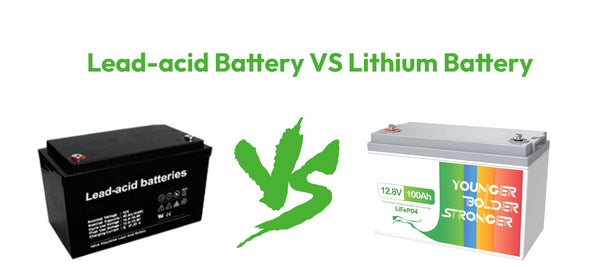Quelle est la différence entre une batterie au lithium et une batterie LiFePO4 ?
Dans le domaine des batteries rechargeables, les batteries au lithium et les batteries LiFePO4 occupent une place prépondérante, chacune offrant des avantages uniques pour des applications spécifiques. Comprendre les différences fondamentales entre ces deux types de batteries est essentiel pour choisir la source d'énergie la plus adaptée à vos besoins.
Présentation des batteries au lithium
Les batteries au lithium, communément appelées batteries lithium-ion, sont un type de batterie rechargeable qui utilise les ions lithium comme principaux porteurs de charge. Ces batteries sont réputées pour leur densité énergétique élevée, qui se traduit par une autonomie prolongée des appareils électroniques. Grâce à leur compacité et à leur légèreté, les batteries au lithium sont largement utilisées dans les appareils électroniques grand public tels que les smartphones, les ordinateurs portables et les tablettes. Cependant, elles sont également connues pour leurs risques potentiels, tels que l'emballement thermique et l'incendie, en cas de manipulation ou de charge incorrectes.
Présentation de la batterie LiFePO4
Les batteries LiFePO4, quant à elles, sont un sous-type de batteries lithium-ion dont la cathode est en phosphate de fer lithium. Cette composition chimique offre plusieurs avantages, notamment une sécurité accrue, une durée de vie plus longue et une meilleure tolérance aux températures élevées. Les batteries LiFePO4 sont souvent utilisées dans des applications exigeant un haut niveau de fiabilité et de sécurité, comme les véhicules électriques, les systèmes de stockage d'énergie solaire et les équipements industriels.

Les principales différences entre les deux batteries
Densité énergétique
Les batteries au lithium ont généralement une densité énergétique plus élevée que les batteries LiFePO4, ce qui signifie qu'elles peuvent stocker plus d'énergie par unité de poids ou de volume. Cela leur permet d'alimenter des appareils plus longtemps avant de nécessiter une recharge.
Sécurité
Les batteries LFP sont considérées comme plus sûres que les batteries au lithium traditionnelles en raison de leur stabilité intrinsèque. La composition du lithium fer phosphate est moins sujette à l'emballement thermique et moins susceptible de s'enflammer ou d'exploser dans des conditions défavorables.
Cycle de vie
Les batteries LiFePO4 ont généralement une durée de vie plus longue, ce qui signifie qu'elles peuvent être chargées et déchargées plus souvent sans perte significative de capacité. Ceci est particulièrement avantageux pour les applications nécessitant des charges et décharges fréquentes, comme les véhicules électriques.
Coût
Les batteries au lithium sont souvent moins chères à produire que les batteries LiFePO4 en raison de la grande disponibilité du lithium et des procédés de fabrication éprouvés. Cependant, la différence de coût peut varier en fonction des conditions du marché et des applications spécifiques.
Taux de charge
Les batteries LFP ont généralement un taux de charge plus lent que certaines batteries au lithium. Cela signifie qu'elles peuvent mettre plus de temps à se recharger complètement, mais elles peuvent également supporter des décharges plus profondes sans endommager la batterie.
En conclusion, les batteries au lithium et les batteries LiFePO4 présentent chacune leurs avantages et leurs inconvénients. Le choix dépend des exigences spécifiques de l'application, notamment les besoins énergétiques, les préoccupations de sécurité, la durée de vie et les contraintes budgétaires. Comprendre ces différences peut vous aider à prendre une décision éclairée lors du choix du type de batterie le plus adapté à votre projet ou appareil.
























